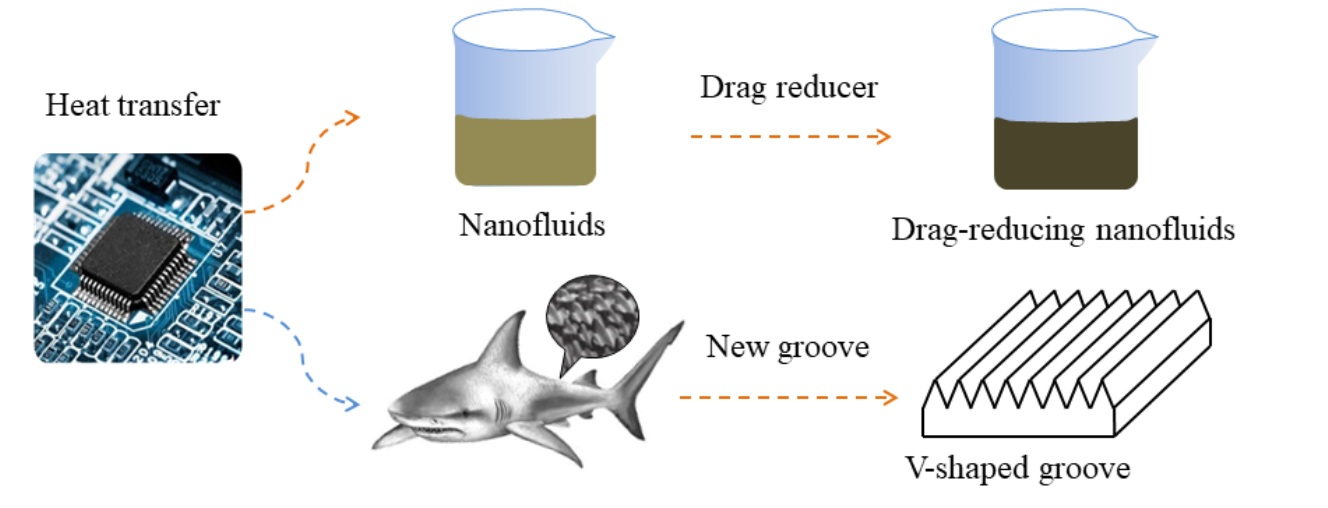 Open Access
Open Access
REVIEW
A Review of Methods Based on Nanofluids and Biomimetic Structures for the Optimization of Heat Transfer in Electronic Devices
School of Low-Carbon Energy and Power Engineering, China University of Mining and Technology, Xuzhou, 221116, China
* Corresponding Author: Cong Qi. Email:
Fluid Dynamics & Materials Processing 2022, 18(5), 1205-1227. https://doi.org/10.32604/fdmp.2022.021200
Received 31 December 2021; Accepted 21 April 2022; Issue published 27 May 2022
Abstract
Nowadays, the utilization rate of electronic products is increasing while showing no obvious sign of reaching a limit. To solve the associated “internal heat generation problem”, scientists have proposed two methods or strategies. The first approach consists of replacing the heat exchange medium with a nanofluid. However, the high surface energy of the nanoparticles makes them prone to accumulate along the heat transfer surface. The second method follows a different approach. It tries to modify the surface structure of the electronic components in order to reduce the fluid-dynamic drag and improve the rate of heat exchange. This article reviews these effects considering different types of nanofluid and different shapes, sizes, and arrangements of “biomimetic grooves”. The idea to use these two methods in a combined fashion (to improve heat transfer and reduce flow resistance at the same time) is also developed and discussed critically to a certain extent.Graphic Abstract

Keywords
Cite This Article
 Copyright © 2022 The Author(s). Published by Tech Science Press.
Copyright © 2022 The Author(s). Published by Tech Science Press.This work is licensed under a Creative Commons Attribution 4.0 International License , which permits unrestricted use, distribution, and reproduction in any medium, provided the original work is properly cited.


 Submit a Paper
Submit a Paper Propose a Special lssue
Propose a Special lssue View Full Text
View Full Text Download PDF
Download PDF Downloads
Downloads
 Citation Tools
Citation Tools